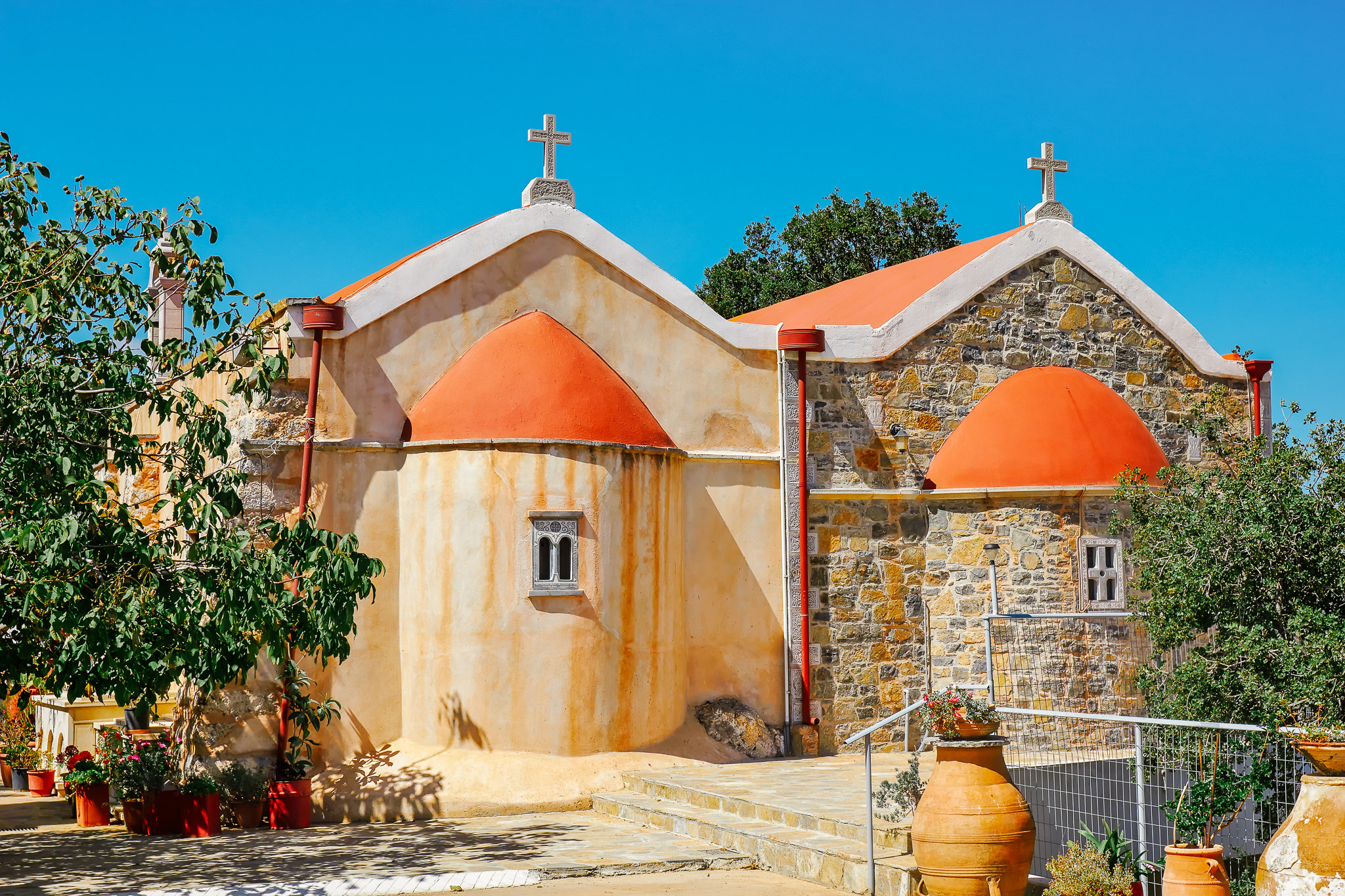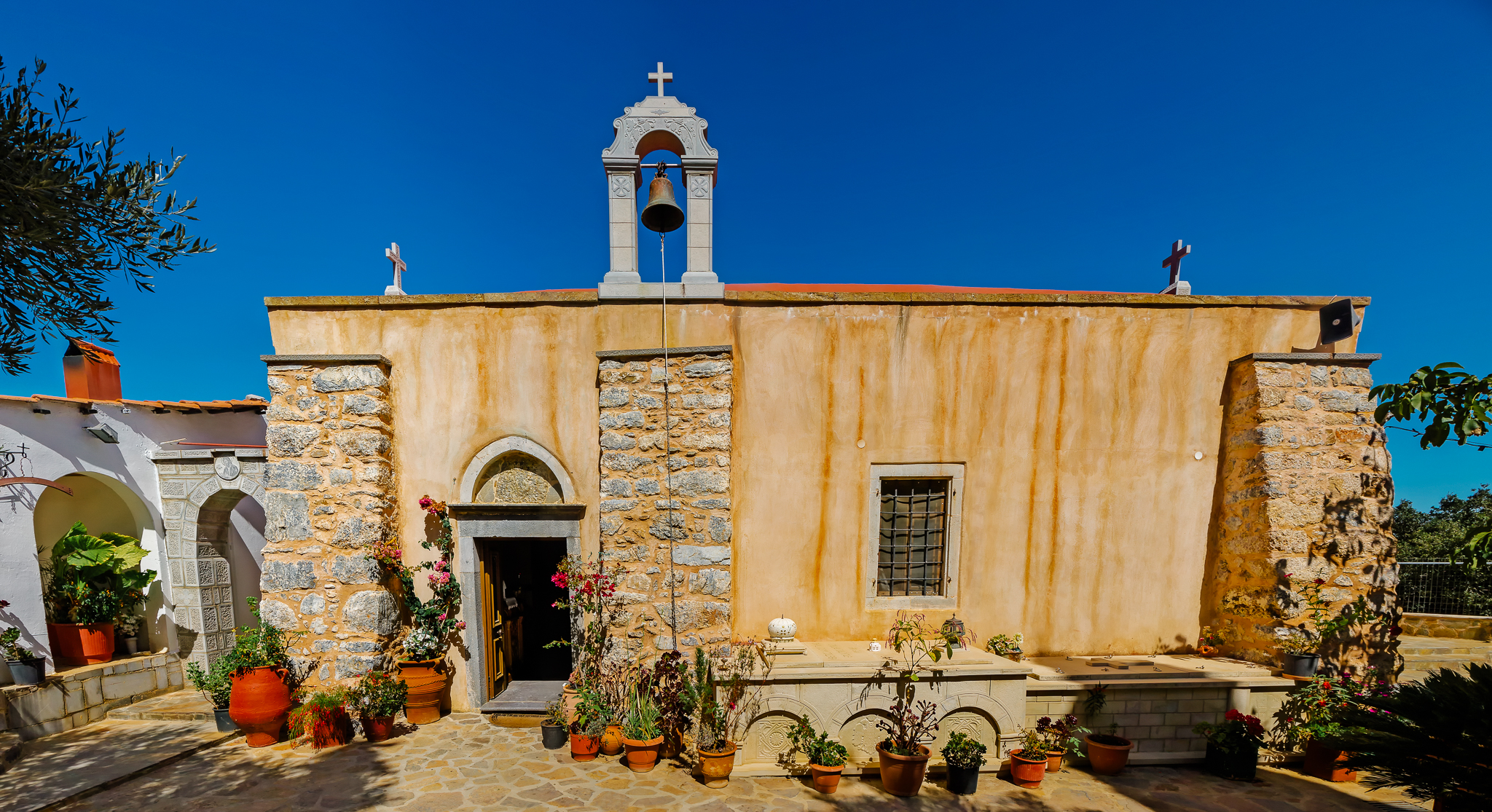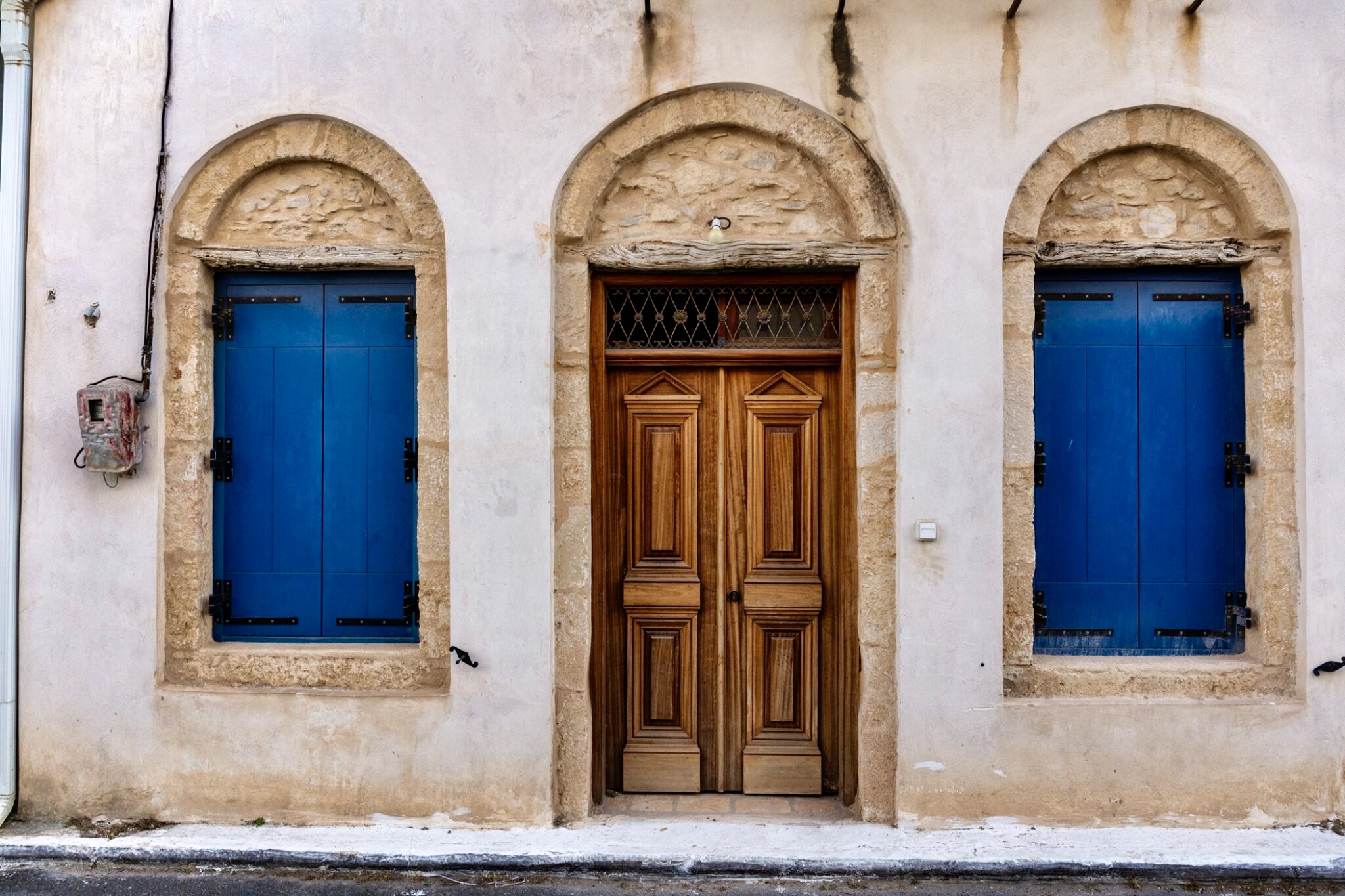Lasithi Prefecture houses some of Crete’s most intriguing monasteries. While the founding dates of most monasteries remain unknown, Lasithi’s religious complexes stand out for their rich history and rare religious artifacts that document Orthodox presence in Crete. It’s worth noting that most monasteries in the region played decisive roles in significant events of Greek history.
Toplou Monastery
At Crete’s easternmost point stands Toplou, one of Lasithi’s most historic monasteries. Featuring Venetian architectural elements and an uncertain founding date – experts estimate the 16th century – Toplou remains Crete’s most significant and wealthy monastery. Despite repeated destruction throughout its history, it has been renovated and maintains continuous operation. The monastery is distinguished by its elaborate bell tower, tentatively dated to 1555, while its icons are considered precursors of Cretan Orthodox art.
Cave Church of Holy Cross
After climbing 248 steps up a massive 200-meter rock formation called Kastelo – once the natural fortress of Kalamafka settlement – visitors reach the cave church of Holy Cross. Impressive due to its location, the church stands on a site identified as the acropolis of ancient Minoan Larisa, based on numerous archaeological findings in the area.
Church of Panagia Skepasti
This church, which gave its name to the nearby village of Skepasti, carries an interesting founding legend. According to tradition, many village women, including the priest’s wife, were captured by Ottomans and sold as slaves in Smyrna. After extensive searching, the village priest found his wife in Smyrna but failed to bring her back. In commemoration, he built a new church in the village, where an inscription still records this event.
Church of Saint Catherine
Though appearing relatively new, Saint Catherine’s Church was rebuilt in the early 19th century and definitively stands on the site of Santa Caterina, an Augustinian order church. Its first bell tower was constructed in 1938, with sanctuary expansions including two auxiliary spaces added in the early 1950s.
Aretiou Monastery
Dedicated to the Holy Trinity, Aretiou Monastery ranks among eastern Crete’s most interesting religious sites. Founded somewhere in the 16th century, it quickly evolved into a significant monastic center, gathering smaller scattered dependencies under its control. During the 1821 Revolution, it burned completely, destroying its archives and treasures. Today, fully restored, it houses rare 17th-century icons.
Saint George Church (Voila)
Saint George Church stands in Sitia’s abandoned Voila settlement, notable for its impressive doorway and rare-for-Greece arcosolium tomb inside. While its founding date remains unknown, death dates of church founders inscribed inside suggest 16th-century origins. Equally interesting are the fresco of Virgin Mary holding infant Jesus and a miniature funeral scene in the founding inscription.
Kremasta Monastery
The women’s Kremasta Monastery south of Neapolis perches at high altitude overlooking Neapolis and Lakes plains. Built fortress-style on Mount Kavallara’s steep, verdant slope, the monastery appears to hang in air – explaining its name. Reportedly built in 1593, sources indicate it played a crucial role in local education. Nearby stands the equally famous Koufi Petra Monastery, dedicated to the Annunciation.
Koufi Petra
With an unknown founding date likely in the late 15th century, Koufi Petra Monastery first appears in 1630 contracts. Current buildings date to the 19th century. Nearby ruins of a cave church built on hollow rock explain the monastery’s name (“Hollow Stone”). Today it operates as a women’s monastery open to visitors.
Exakousti Monastery
Following a route overlooking the southern Cretan Sea, visitors quickly reach Exakousti Monastery. Despite its importance, little is known about its founding or date. Archaeologists believe it was established in an area where earlier forms of monasticism flourished. Tradition holds that an older monastery here was destroyed during Ottoman rule, with renewed development starting in the mid-19th century until about 1930. Since 1961, the monastery has been completely renovated and operates regularly.











